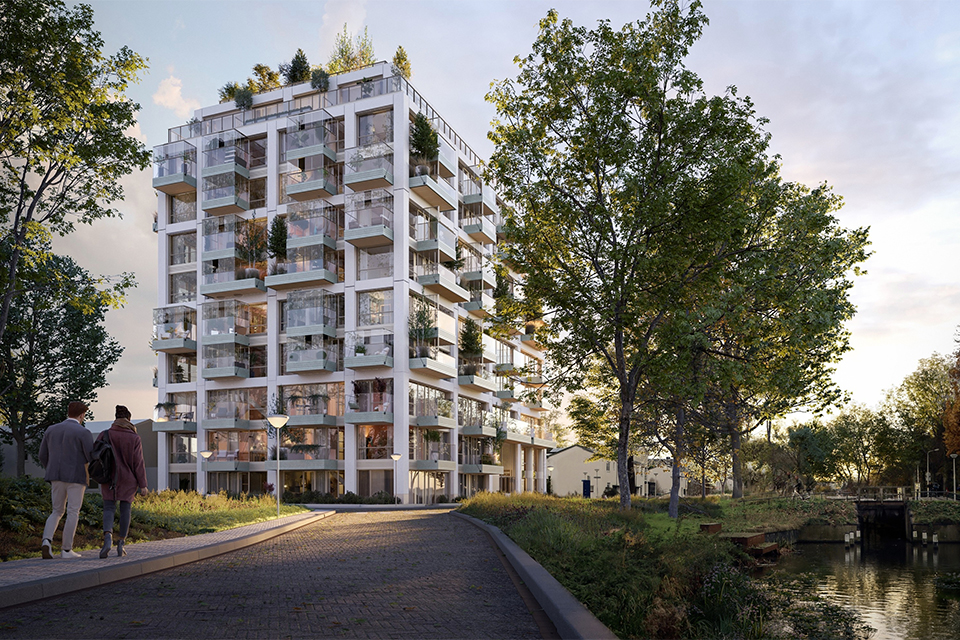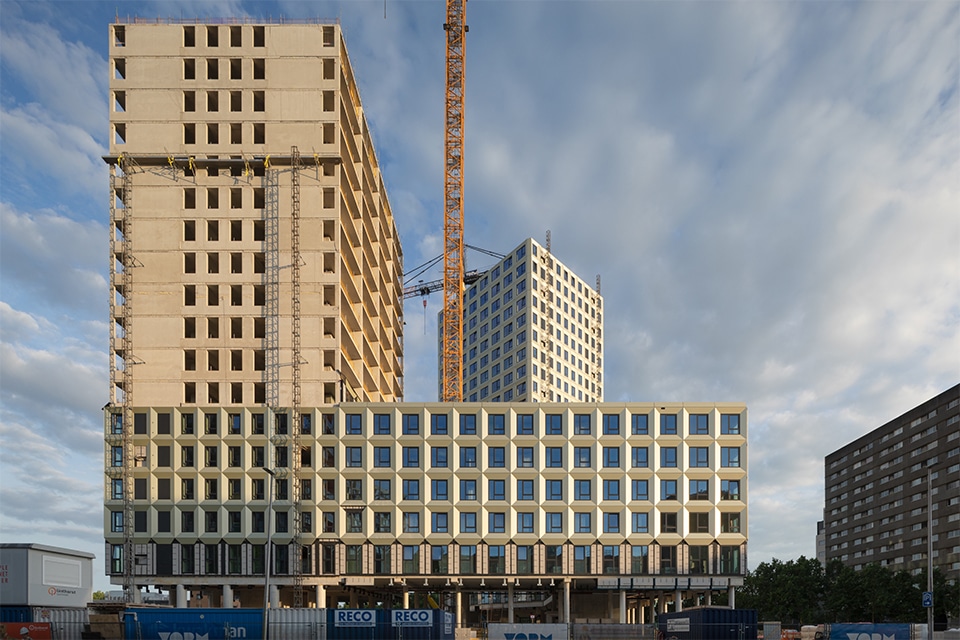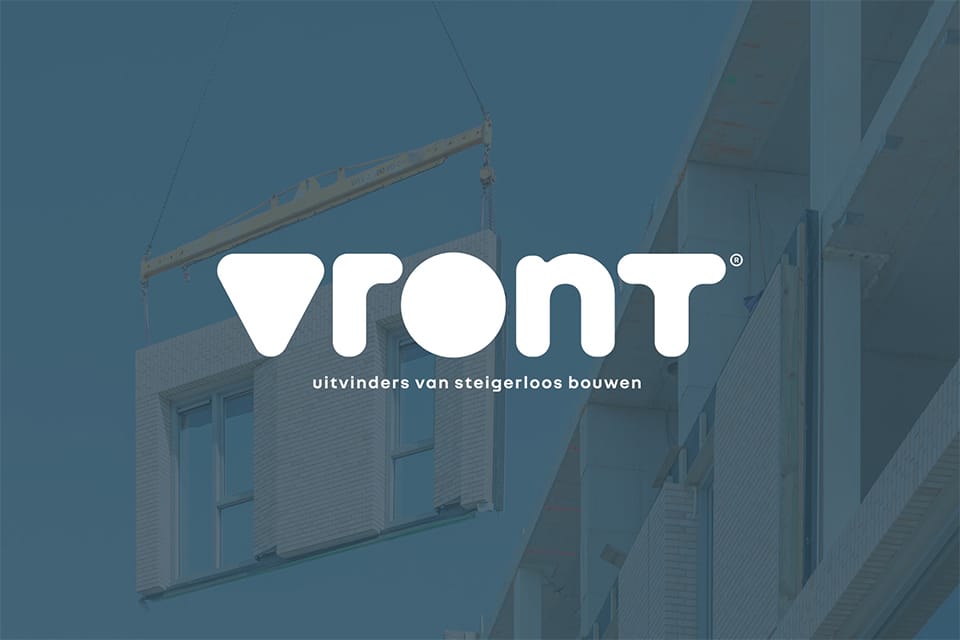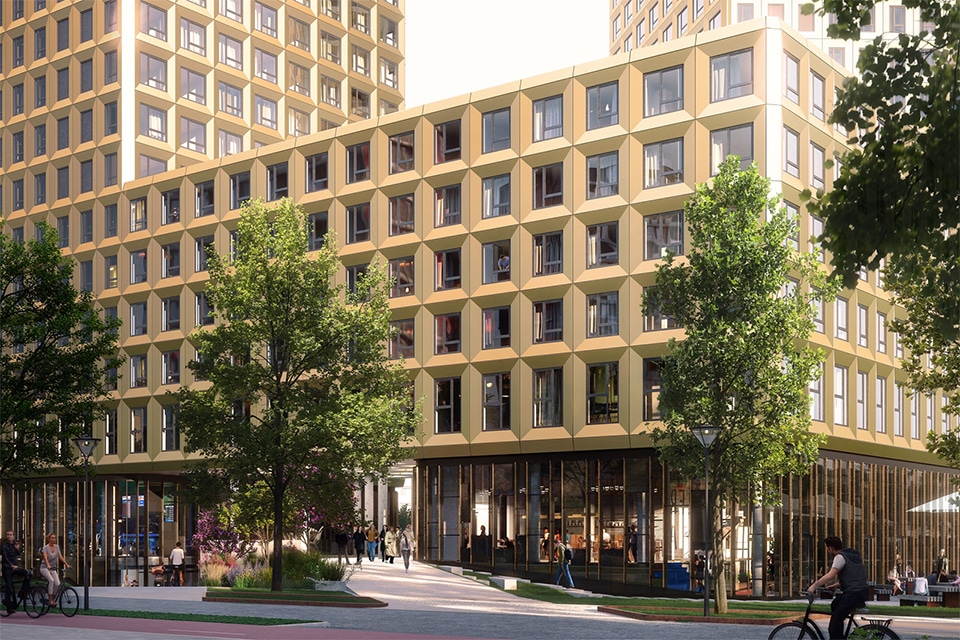
Aging serviced apartments get second life as sustainable social housing
While housing corporation Stichting Thius - then SCW - made the decision in 2010 to demolish service apartment De Batouwe in Tiel and replace it with new construction, plans were changed to a thorough renovation in 2016. Local architectural firm WagterKrijger drew the plans and construction company De Vree and Sliepen was commissioned to further develop and execute the project. The outdated service flats will be transformed into sustainable social housing. The first residents will be able to move in in mid-2021.

Serviceflat De Batouwe, built in 1973 and expanded in 1988, was intended as an apartment building for elderly people who could live independently but occasionally needed assistance and supervision. However, the housing units were completely outdated and no longer met requirements in terms of comfort and energy performance. It was therefore decided in 2010 that the flat would have to make way for new construction in the future. "In 2016, however, that decision was reversed. A study showed that the demand for social housing would increase significantly. The plans for demolition were changed to a thorough renovation," says Wim van Vreeswijk, head of acquisition and development at De Vree and Sliepen. "The Tiel architect Pieter Wagter made an initial design and in 2019 the Thius Foundation put out a request to four parties to present a Plan of Action. De Vree and Sliepen was selected as a construction team partner for the further development and realization of the transformation."
Sustainable rental housing
The service flat with 134 apartments is currently being transformed into an apartment complex with 121 two- and four-bedroom social rental apartments. While the building from the 1970s will retain its original form, it will be given a contemporary look and will also meet all current sustainability requirements. "Early last year we started the demolition and renovation work. Actually, only the concrete support structure remained. The facades will be replaced. Here we are using prefabricated facade elements with integrated window frames, which are produced in the factory for subsequent ready-to-assemble on the construction site. The masonry with a combination of yellow and black/brown bricks refers to the past. Furthermore, the roof will be better insulated and newly covered. All apartments will also receive new kitchens, bathrooms and toilets. Also, the entire area around the building will be redesigned, with sufficient parking spaces realized to meet today's standards," Van Vreeswijk said. "In addition to the aesthetic makeover, sustainability is also a theme. The better-insulated facades and roofs, combined with a high airtightness of the building envelope, ensure that the building will carry at least an energy label A after the renovation."

Good preparation and planning crucial
Such a project in a construction team formula is tailor-made for De Vree and Sliepen. Although neither De Vree nor Sliepen is in charge today, the all-round construction company retains its family character, with its well-known flexibility and short lines of communication. "A successful realization of such a project stands or falls first and foremost with proper coordination with the client. This was not the first project for the Thius Foundation, so they knew perfectly what they had in store for us," Van Vreeswijk said. "Furthermore, good preparation and clear communication between all construction partners are crucial. The project is still under construction, but by mid-2021 the first residents will be able to move into these new, sustainable social housing units."
Specialist in interior finishing supplies and installs walls and ceilings
One of the regular partners of De Vree and Sliepen for interior finishing projects is Van Ginkel Afbouw from Renswoude. "For over 20 years we have specialized in the supply and assembly of various wall and ceiling systems, but also in the complete finishing of new construction and renovation projects or the realization of turnkey projects, such as the transformations of buildings. Our people combine craftsmanship and enthusiasm to complete every job within a tight but realistic schedule," says director and owner Marco van Ginkel. "In the social rental apartments in Tiel, we supply and install walls and ceilings in various areas: the plaster ceilings in the living rooms and bedrooms, the walls and ceilings in the storerooms, the finishing around the doors and the partition walls between the various apartments. The work started in November last year and in April we will deliver the last apartments. We are averaging 6 to 7 people working on this site."
Making holes in existing prestressed concrete floors without breaking the cables
If contractors want to make holes or recesses in prestressed concrete floors during remodeling projects, they may well be disappointed and break the tension cables. To prevent that from happening, they can call on the specialists at Atlas of Culemborg, an engineering and construction firm specializing in prestressed concrete and also a supplier of precast concrete and reinforcement. "Atlas Prestressing Corporation, the former name of Atlas Bouwtechnisch Adviesburo, developed a unique system in the field of prestressed concrete with riveted steel in the 1960s. This solution was first launched in America, but was soon used for projects in the Netherlands. It allowed larger free spans and could handle higher loads. This type of floor was used by construction company Van Wijnen, among others, in service apartment De Batouwe," explains manager Hans Stoop. "We still had all the calculations and drawings from that project in our archives. Since new holes had to be made in the floors during the renovation, we were contacted by De Vree and Sliepen to determine the most favorable locations based on detection and drawings and to drill the necessary holes on site with diamond drills. An average of ten holes ranging from 70 to 350 mm in diameter are made in each apartment. We started in September last year and currently the work is being carried out in the last apartments."
One partner for drilling and cutting concrete: from demolition to completion
During construction or infrastructure work, it is not uncommon to have to drill holes in concrete, stone or asphalt or cut out entire sections. For such operations, main contractors usually call on a specialist. For example, Korenhof Betonbewerking en Montage from Culemborg was contacted by De Vree en Sliepen for supporting concrete operations in the transformation of service apartment De Batouwe. "We regularly work for the construction company, both for new construction and renovation in housing and utilities. In such transformation projects, a lot of drilling and sawing work has to be carried out, and so we ran the entire process: from demolition to structural work and even in the finishing. We started around the summer of 2020 and soon the last concrete operations will be completed," says case manager Andre Korenhof. "During preparation, we sawed in walls and walls so that they could be demolished more easily. During reconstruction, we were mainly responsible for drilling holes and cutting slots for installing pipes. Furthermore, we also cut new doorways in the concrete walls." Korenhof always tries to completely unburden its clients. Therefore, not only is drilling and sawing done, but the company also has machines for sanding, roughing and milling walls and floors. In addition, specialist demolition and assembly work is carried out.



